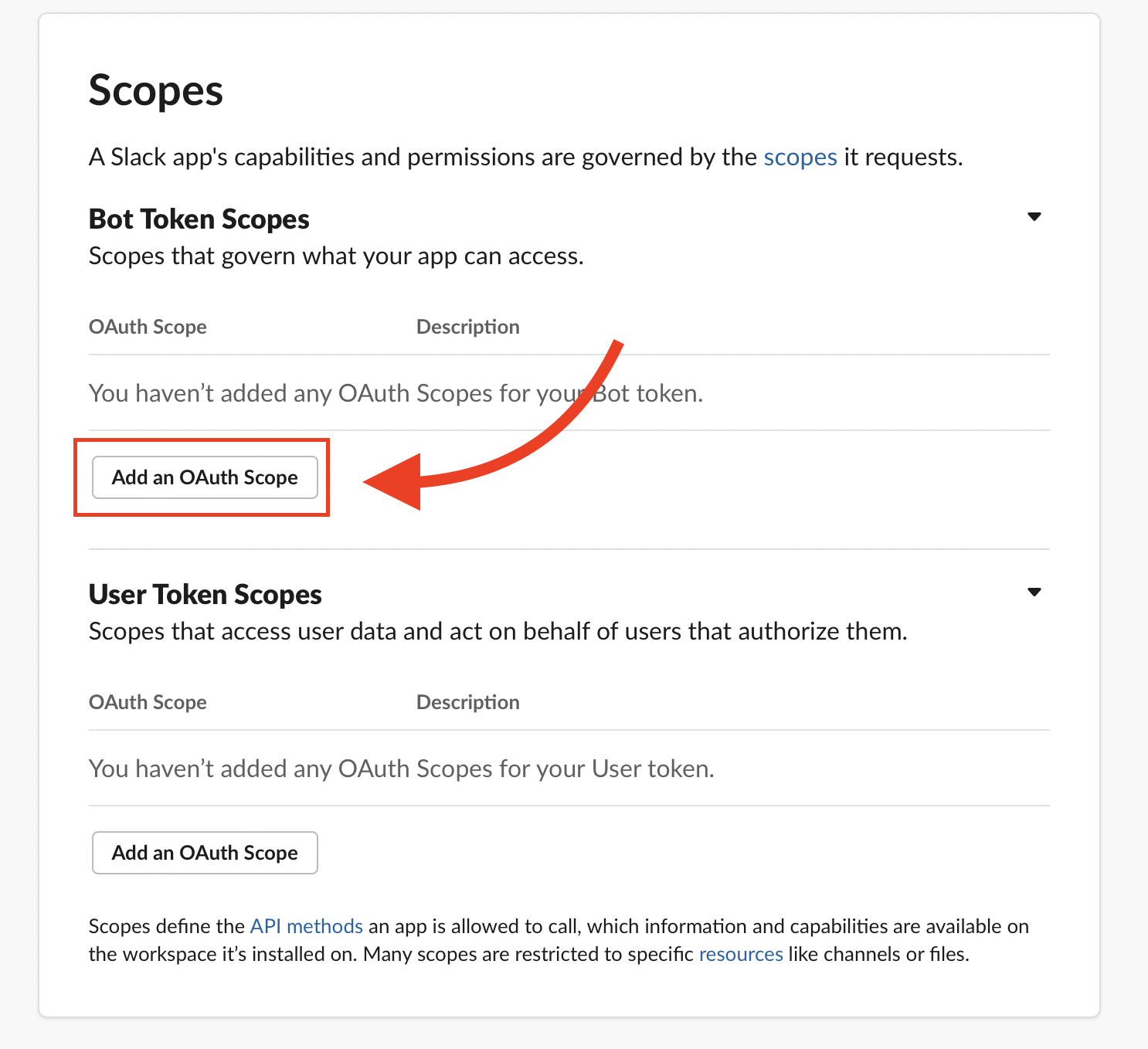Slack Sink
Introduction
The Slack Sink is a Vanus Connector that aims to handle incoming CloudEvents by extracting the data part of the
original event and delivering it to a Slack channel.
For example, if an incoming CloudEvent looks like:
{
"id": "53d1c340-551a-11ed-96c7-8b504d95037c",
"source": "quick-start",
"specversion": "1.0",
"type": "quick-start",
"datacontenttype": "application/json",
"time": "2022-10-26T10:38:29.345Z",
"data": {
"blocks": [
{
"type": "section",
"text": {
"text": "A message italicized text_.",
"type": "mrkdwn"
}
},
{
"type": "section",
"text": {
"type": "plain_text",
"text": "This is a plain text section block.",
"emoji": true
}
}
]
}
}
The Slack channel will receive a message like:

Quick Start
In this section we will show you how to use Slack Sink to send a message to a Slack Channel.
Prerequisites
- Have a container runtime (i.e., docker).
- Have a Slack account.
Create an App in Slack
- Create an app on slack.

- Select
From scratch.
- Set the bot name and Workspace.
- Click on permissions in the central menu.

- Scopes 'Add OAuth Scope'
chat:writeandchat:write.public.
- Install to workspace.

- Set your configurations with the
Bot User OAuth Tokenin OAuth & Permissions.
Create the config file
cat << EOF > config.yml
token: "xoxp-422301774731343243235Example"
default_channel: "#general"
| Name | Required | Default | Description |
|---|---|---|---|
| port | NO | 8080 | the port which Slack Sink listens on |
| token | YES | OAuth Token of this app, more visit: https://api.slack.com/legacy/oauth | |
| default_channel | YES | set default channel the messages send to if attribute was not be set |
The Slack Sink tries to find the config file at /vanus-connect/config/config.yml by default. You can specify the
position of config file by setting the environment variable CONNECTOR_CONFIG for your connector.
Start with Docker
docker run -it --rm \
-p 31080:8080 \
-v ${PWD}:/vanus-connect/config \
--name sink-slack public.ecr.aws/vanus/connector/sink-slack
Test
We have designed for you a sandbox environment, removing the need to use your local machine. You can run Connectors directly and safely on the Playground.
Open a terminal and use the following command to send a CloudEvent to the Sink.
curl --location --request POST 'localhost:31080' \
--header 'Content-Type: application/cloudevents+json' \
--data-raw '{
"id": "53d1c340-551a-11ed-96c7-8b504d95037c",
"source": "quick-start",
"specversion": "1.0",
"type": "quick-start",
"datacontenttype": "application/json",
"time": "2022-10-26T10:38:29.345Z",
"data": {
"blocks": [
{
"type": "section",
"text": {
"text": "A message italicized text_.",
"type": "mrkdwn"
}
},
{
"type": "section",
"text": {
"type": "plain_text",
"text": "This is a plain text section block.",
"emoji": true
}
}
]
}
}'
Now, you should see in your slack channel your message.

Clean
docker stop sink-slack
Sink details
Extension Attributes
The Slack Sink has additional options if the incoming CloudEvent contains the followingExtension Attributes .
| Attribute | Required | Examples | Description |
|---|---|---|---|
| xvchannel | NO | #general | chanel |
Data format
the event data must be JSON format, and only with key blocks , refer doc
Examples
Sending a message to the default channel.
curl --location --request POST 'localhost:31080' \
--header 'Content-Type: application/cloudevents+json' \
--data-raw '{
"id": "53d1c340-551a-11ed-96c7-8b504d95037c",
"source": "quick-start",
"specversion": "1.0",
"type": "quick-start",
"datacontenttype": "application/json",
"time": "2022-10-26T10:38:29.345Z",
"data": {
"blocks": [
{
"type": "section",
"text": {
"text": "A message italicized text_.",
"type": "mrkdwn"
}
},
{
"type": "section",
"text": {
"type": "plain_text",
"text": "This is a plain text section block.",
"emoji": true
}
}
]
}
}'
Sending a message to a specific channel.
curl --location --request POST 'localhost:31080' \
--header 'Content-Type: application/cloudevents+json' \
--data-raw '{
"id": "53d1c340-551a-11ed-96c7-8b504d95037c",
"source": "quick-start",
"specversion": "1.0",
"type": "quick-start",
"datacontenttype": "application/json",
"time": "2022-10-26T10:38:29.345Z",
"xvchannel": "#team-a",
"data": {
"blocks": [
{
"type": "section",
"text": {
"text": "A message italicized text_.",
"type": "mrkdwn"
}
},
{
"type": "section",
"text": {
"type": "plain_text",
"text": "This is a plain text section block.",
"emoji": true
}
}
]
}
}'
Run in Kubernetes
apiVersion: v1
kind: Service
metadata:
name: sink-slack
namespace: vanus
spec:
selector:
app: sink-slack
type: ClusterIP
ports:
- port: 8080
name: sink-slack
---
apiVersion: v1
kind: ConfigMap
metadata:
name: sink-slack
namespace: vanus
data:
config.yml: |-
token: "xoxp-422301774731343243235Example"
default_channel: "#general"
---
apiVersion: apps/v1
kind: Deployment
metadata:
name: sink-slack
namespace: vanus
labels:
app: sink-slack
spec:
selector:
matchLabels:
app: sink-slack
replicas: 1
template:
metadata:
labels:
app: sink-slack
spec:
containers:
- name: sink-slack
image: public.ecr.aws/vanus/connector/sink-slack
resources:
requests:
memory: "128Mi"
cpu: "100m"
limits:
memory: "512Mi"
cpu: "500m"
imagePullPolicy: Always
ports:
- name: http
containerPort: 8080
volumeMounts:
- name: config
mountPath: /vanus-connect/config
volumes:
- name: config
configMap:
name: sink-slack